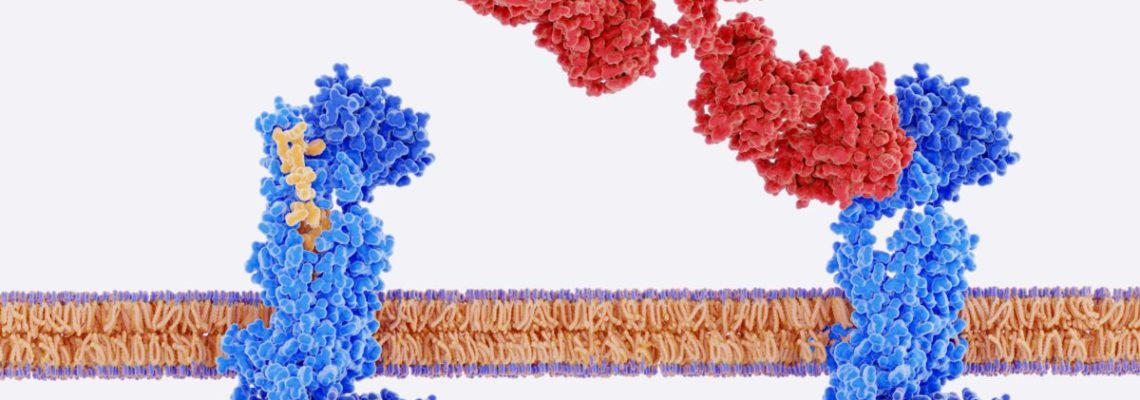Just one mammalian cell is made up of a combination of many distinct proteins, often to the degree of thousands in varying concentrations. The variety and magnitude of protein types within just micro volumes of a single sample micro present substantial challenges for purification and isolation of these macromolecules.
Separating the desired protein from tissue and undesirable proteins is extremely labor-intensive, however protein purity is an essential part of success with downstream applications. Common issues resulting from poor quality protein samples include misfolding, irreversible aggregation, and degradation. It is essential to take the time to control and evaluate protein purity prior to beginning costly or time-consuming experiments.
There are numerous methods of assessing protein purity. In this article, we will outline eight of the most common.
General Quantification: UV-Vis, Bradford and Activity Assays
One way of measuring protein purity is through general quantification of concentration. Although Bradford assays and UV-Vis spectrophotometry are high-throughput and are used in most biochemistry labs across the world, they are relatively basic compared to enzymatic activity assays. This is because UV-Vis and Bradford assay results are contingent on the total protein inside a sample, not just the protein of interest. In contrast, activity assays are target-specific and have the additional benefit of measuring the fraction of active protein in a purified sample. However, not all proteins can be quantified with an activity assay.[1]
Size Analysis: Electrophoresis (Native/Denaturing PAGE)
Like the above general quantification method of protein purity, electrophoresis is widely employed by biochemists and can provide a general picture of both the size of target proteins and the presence of other protein-based impurities. The detergent known as sodium dodecyl sulfate (SDS) has a profound impact on protein structure and is a critical element of the most frequently used laboratory technique which separates proteins and determines their molecular weights: polyacrylamide gel electrophoresis. Proteins spontaneously unfold in microseconds at the boiling point of water when SDS is present. Specific interactions of individual SDS molecules alter the protein’s secondary structure, allowing for downstream separation based on size.[2]
Analytical HPLC
High-performance liquid chromatography (HPLC) systems can be employed to analyze the purity of liquid protein mixtures. Normal phase and reversed phase HPLC are two of the most frequently used forms of chromatographic separation techniques. Normal phase employs a polar stationary phase and a non-polar mobile phase to separate components of a mixture. Reversed phase HPLC employs phases with opposing polarities of normal phase chromatography. The sample liquid is combined with the mobile phase and run through a column which houses the stationary phase. The interactions of proteins in a sample with the stationary phase result in separation based on polarity, and is sensitive enough to uniquely identify proteins that differ by only a few amino acids. HPLC also allows for specific identification and accurate quantitation of protein impurities.[3]
Size Analysis: Mass Spectrometry
Mass spectrometry is a powerful analytical technique used for monitoring protein purity which can detect post-translational modifications with accuracy and precision. Mass spectrometry works by ionizing proteins or peptides and separating them by mass and charge, accelerating ions onto a detector and forming a unique spectrum for each protein/protein fragment. One drawback of the denaturing that occurs in the mass spectrometer is that this technique cannot be used to determine whether the proteins in a sample are intact.
Hydrophobic Interaction Chromatography (HIC)
HIC separates proteins by the distinctions in their surface hydrophobicity achieved by utilizing a reversible interaction between the proteins and the hydrophobic surface of a HIC medium. HIC also has the benefit of avoiding the use of organic solvents, which can often denature protein samples. The interaction of hydrophobic proteins and a HIC medium is substantially impacted by specific salts in the running buffer. A high salt concentration strengthens the interaction while dropping the salt concentration causes separation and elution based on hydrophobicity[4].
Homogeneity: Dynamic Light Scattering
If the methods discussed above have displayed protein purity, its dispersion within the sample must be checked. Dynamic light scattering uses polarized laser light to measure the level of diffraction in a sample with proteins; this is the scattering that occurs as an effect of the hydrodynamic radius of the particles in solution as the sample travels through the instrument.
It is a simple method that provides good qualitative information, though it doesn’t offer a comprehensive picture of the size distribution in a protein sample as the detector can get overwhelmed. [5]
Microfluidic Diffusional Sizing (MDS)
Fluidics testing is a simple option to measure protein purity based on size and concentration. MDS uses microfluidic chips to run the protein sample through a channel with an auxiliary fluid in a steady state laminar flow without mixing. To move from one stream to another the proteins must diffuse and the rate at which this occurs is proportional to their size, measured as the hydrodynamic radius (Rh). The ratio of diffused and undiffused species is used to calculate this value.
MDS doesn’t share the pitfalls of other separation techniques as there is no interaction between the protein and a matrix. Unfortunately, the specificity of this assay is limited unless protein specific labelling is employed.
Jordi Labs for Protein Purity
Jordi Labs can quantify protein purity and concentration in a solution rapidly using mass spectroscopy, UV-Vis spectroscopy, and chromatographic methods. Our protein purity services result in the utmost confidence in isolation products, ensuring the integrity of analytical results and dosage from biopharmaceuticals. If you would like to learn more, contact a member of our team today.
[1] Bitesizebio. (2018) “Five Methods for Assessing Protein Purity and Quality” [Online] https://bitesizebio.com/41757/five-methods-for-assessing-protein-purity-and-quality/
[2] Winogradoff, D. John, S. and Aksimentiev, A. (2020) “Protein unfolding by SDS: the microscopic mechanisms and the properties of the SDS-protein assembly” Nanoscale 7;12(9):5422-5434
[3] Labcompare “Analytical HPLC System” [Online] https://www.labcompare.com/Laboratory-Analytical-Instruments/146-Analytical-HPLC-System/
[4] GE Healthcare. (2006) “ Hydrophobic Interaction and Reversed Phase Chromatography “ Uppsala: GE Healthcare Bio-Sciences AB
[5] Bitesizebio. (2018) “Five Methods for Assessing Protein Purity and Quality” [Online] https://bitesizebio.com/41757/five-methods-for-assessing-protein-purity-and-quality/





